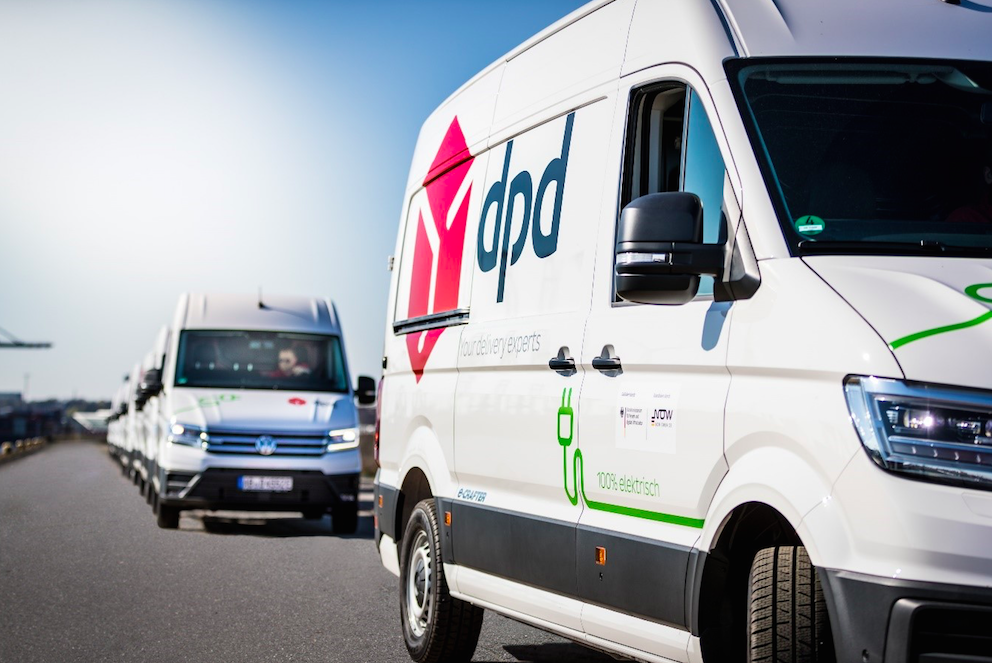 Delivery firm DPD last week hit its target to electrify 10 per cent of its fleet five months ahead of schedule. It now has 700 EVs on the road. Olly Craughan, CSR general manager, DPDgroup UK, told The Energyst that every depot had been tasked to meet that quota and that the firm will now reset its goals. Interviewed for the new 2020 EV report, Craughan outlined DPD’s approach.
Delivery firm DPD last week hit its target to electrify 10 per cent of its fleet five months ahead of schedule. It now has 700 EVs on the road. Olly Craughan, CSR general manager, DPDgroup UK, told The Energyst that every depot had been tasked to meet that quota and that the firm will now reset its goals. Interviewed for the new 2020 EV report, Craughan outlined DPD’s approach.
The majority of DPD’s drivers are franchisees, typically leasing through DPD or purchasing the vans independently, and so will take the vans home and charge at home, says Craughan.
That reduces the infrastructure requirement at DPD’s depots, but it necessitates careful planning when allocating EV routes to drivers and ensuring they can fulfill a day’s work.
“So most of the EV routes will be those closest to the depot. As range improves, we will work our way out,” says Craughan.
Alternative vehicles
As well as Nissan E-NV200s and MAN 3.5t eTGE electric vans, DPD with EAV launched a purpose-built, e-cargo cycle last November. Olly Craughan thinks the e-bikes will play a role in the post covid era for parcel carriers, especially if central and regional governments support that strategy with policy that encourages people to think beyond cars, vans and lorries.
Meanwhile, Craughan says DPD is evaluating numerous other vehicles, including those made by new breed start-ups as well as firms retrofitting electric drive trains to existing trucks.
“Nothing is off the table,” he says. “Any strategy needs to be fluid at this moment, because the technology is moving so fast.”
Centrally driven vans?
DPD has started taking delivery of 100 3.5t vans from MAN. These have had to be converted from left hand drive to right hand drive – and to date there has been a distinct lack of larger vans ready made for the UK market.
DPD CEO Dwain McDonald said earlier this year the company could “take far more” 3.5 tonners if they were available.
While much of the world operates on left hand drive systems, Olly Craughan thinks there is space for a centrally driven electric van, which would then have global application.
“Hopefully we will continue to see innovation from some of the start-ups,” he says. In the meantime, the MAN 3.5t vans, able to deliver approximately 70 miles, will boost efficiency in terms of route density on its inner city drops.
“We want to be the leader in sustainable delivery,” says Craughan. “Covid has not changed that strategy and we will be making more announcements soon.”
Free download: The 2020 EV report
 This article is one of a number of in-depth interviews conducted for our The Energyst’s new 2020 EV report. It contains expert insight across a range of sectors, plus a survey of more than 300 firms around EV charging infrastructure plans.
This article is one of a number of in-depth interviews conducted for our The Energyst’s new 2020 EV report. It contains expert insight across a range of sectors, plus a survey of more than 300 firms around EV charging infrastructure plans.
Sponsored by Arup, EDF, Good Energy, New Motion and Total Gas & Power, the report also includes views from: Arval, Cenex, Dreev, Engenie, ev.energy, Hitachi Capital Vehicle Solutions, Liberty Charge, Mitie, National Grid, Nottingham City Council, The John Lewis Partnership, TLT, UPS, UK Power Networks and Western Power Distribution.
Download the report here.



